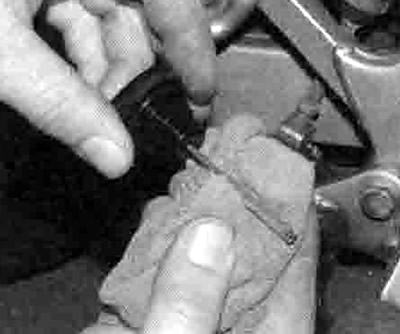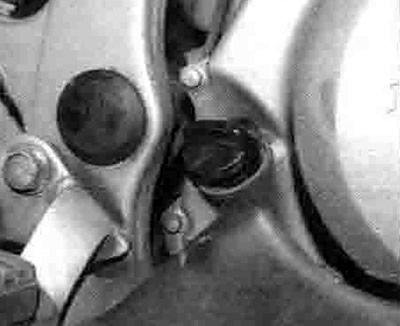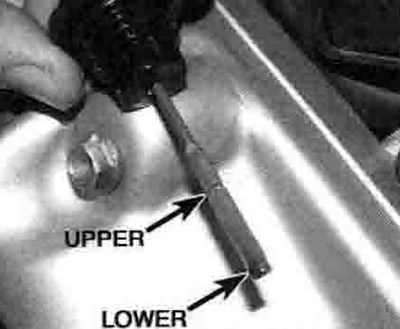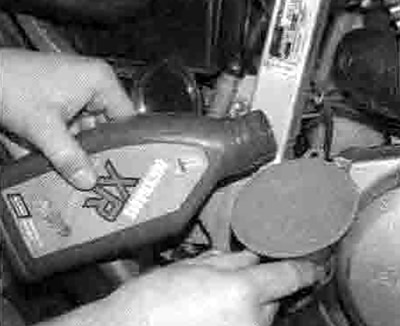Before you start
- Take the motorcycle on a short run to allow it to reach normal operating temperature.
Caution: Do not run the engine in an enclosed space such as a garage or workshop.
- Stop the engine and support the motorcycle upright; use the cenlrestand if it has one. Allow it to stand undisturbed for a few minutes to allow the oil level to stabilise. Make sure the motorcycle is on level ground.
The correct oil
- Modern, high-revving engines place great demands on their oil. It is very important that the correct oil for your bike is used.
- Always top up with a good quality oil of the specified type and viscosity and do not overfill the engine.
| Oil type | API grade SE, SF or SG |
| Oil viscosity* | SAE 10W40* |
*If you are using the motorcycle constantly in extreme conditions of heat or cold, other more suitable viscosity ranges may be used - refer to the viscosity table to select the oil best suited to your conditions.
Bike care
If you have to add oil frequently, check whether you have any oil leaks from the engine joints, seals and gaskets. If not. the engine could be burning oil. in which case there will be white smoke coming out of the exhaust - (see Fault Finding).

Oil viscosity table: select the oil best suited to your conditions
1. Unscrew the oil filler cap from the righthand side crankcase cover. The dipstick is integral with the oil filler cap, and is used to check the engine oil level.

2. Using a clean rag or paper towel, wipe off all the oil from the dipstick.

3. Insert the clean dipstick back into the engine, allowing it to rest on the bottom thread of the cap - do not screw it in.

4. Remove the dipstick and observe the level of the oil, which should be somewhere in between the upper and lower level marks (arrowed).

5. If the level is below the lower mark, top the engine up with the recommended grade and type of oil, to bring the level up to the upper mark on the dipstick.

